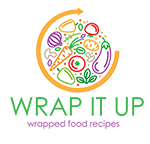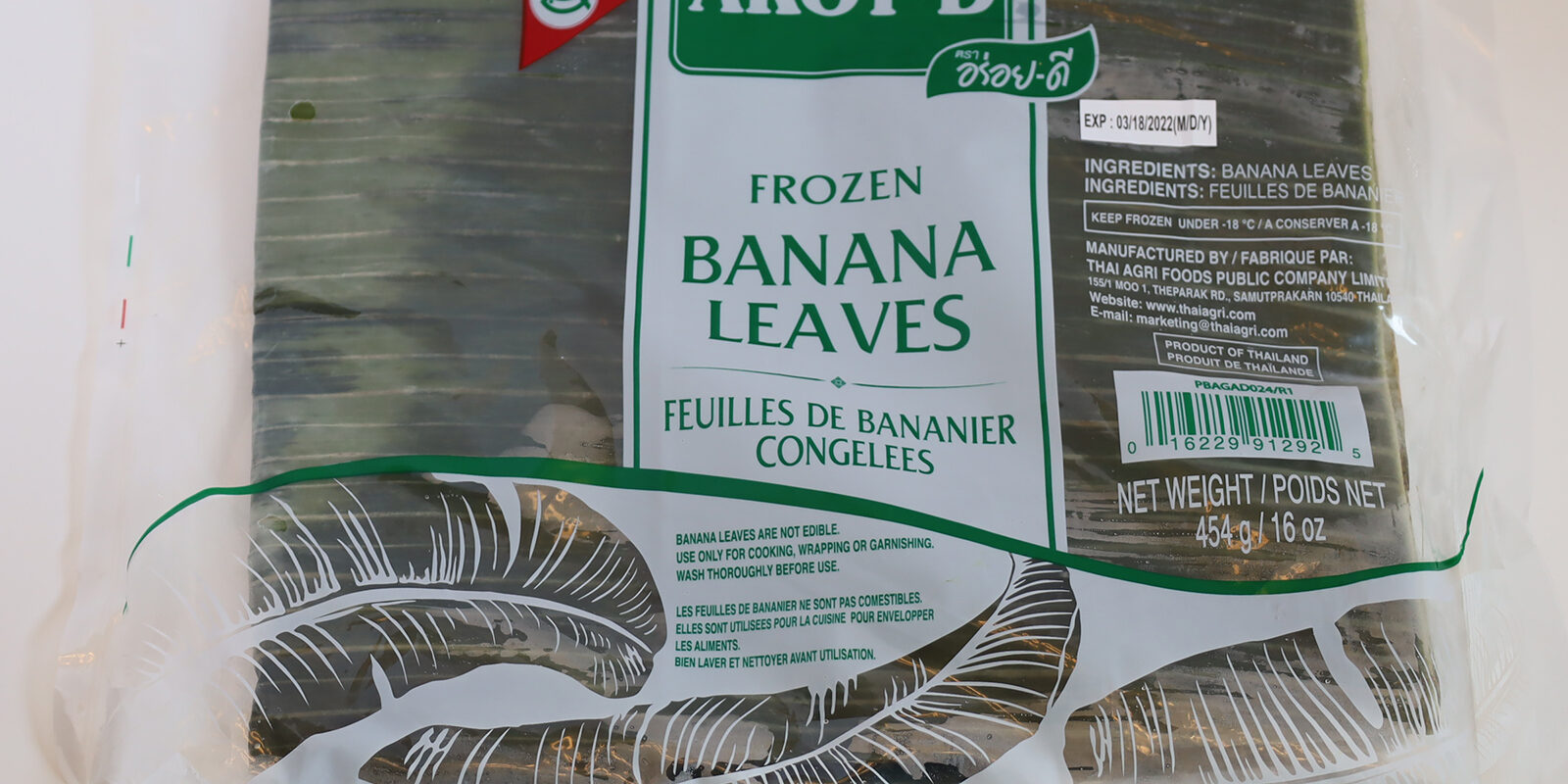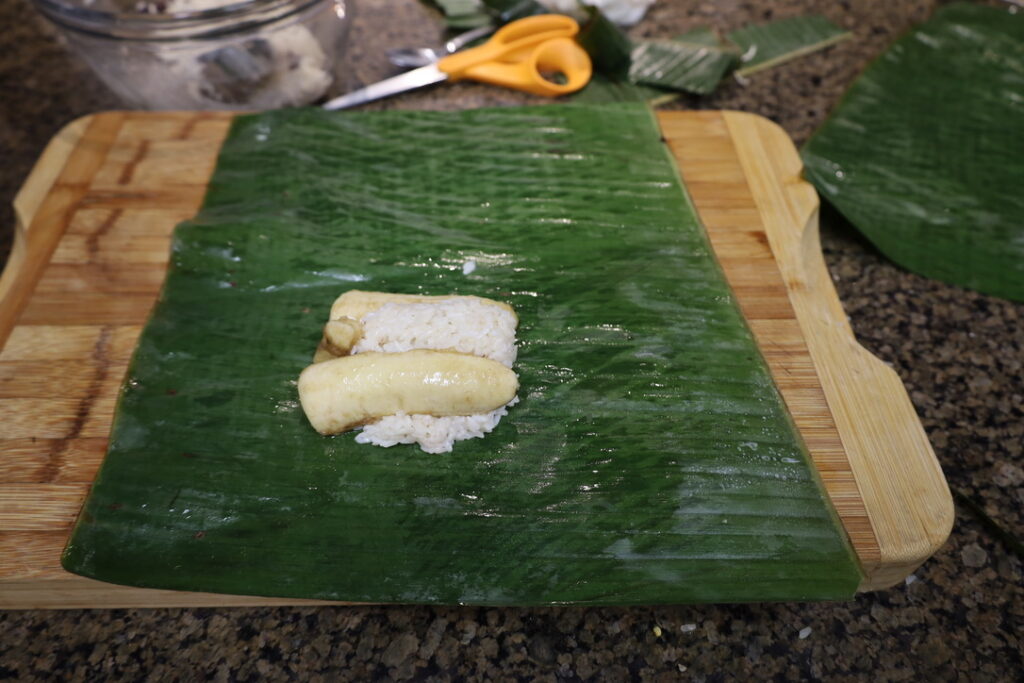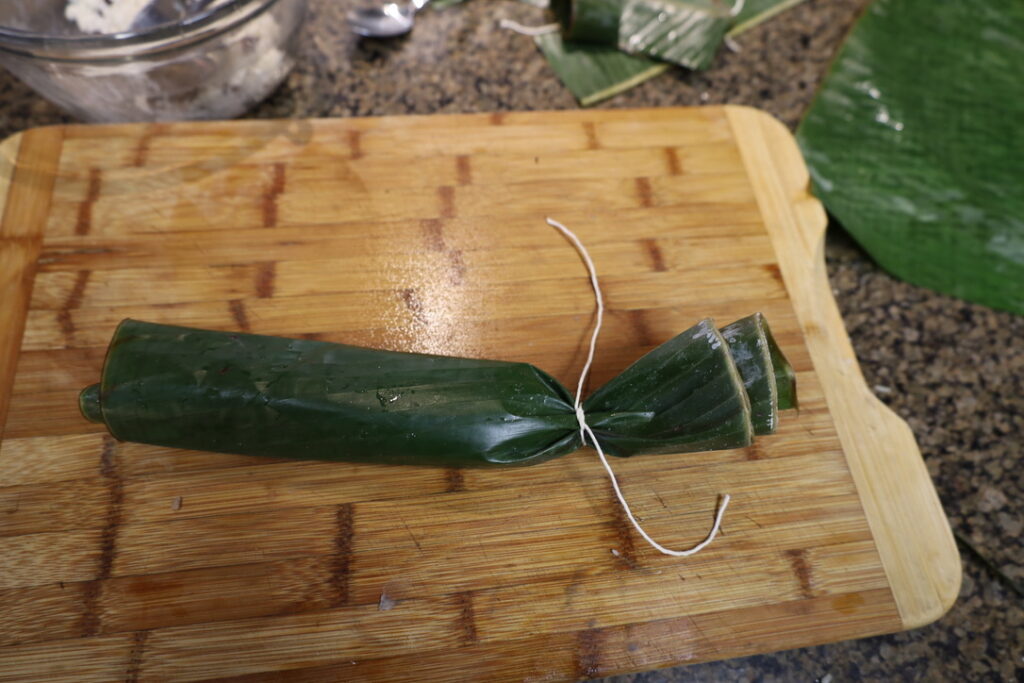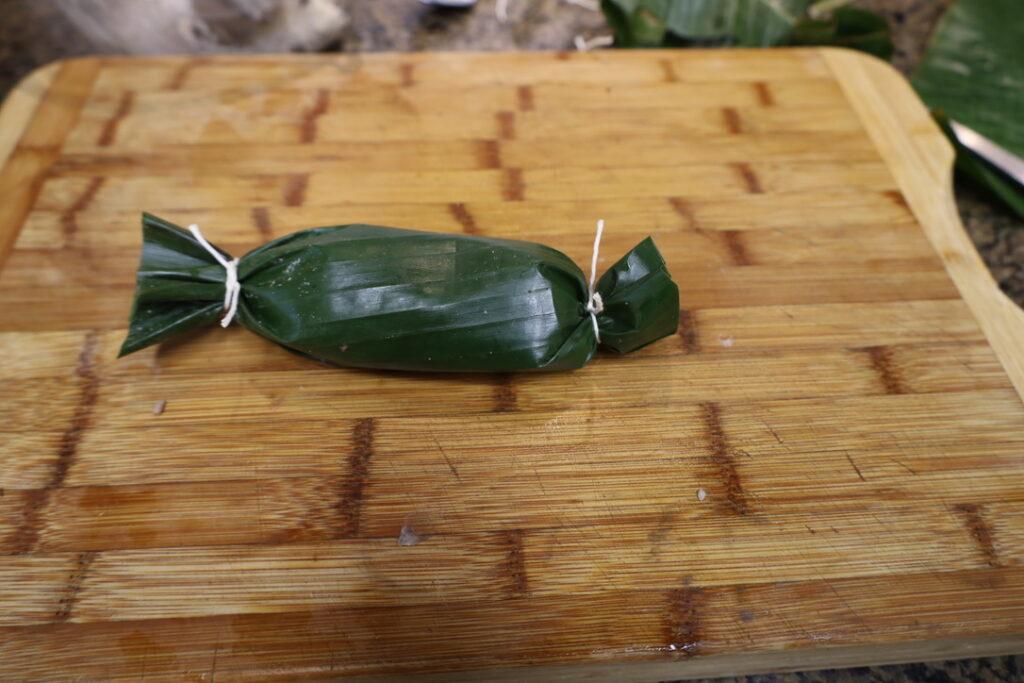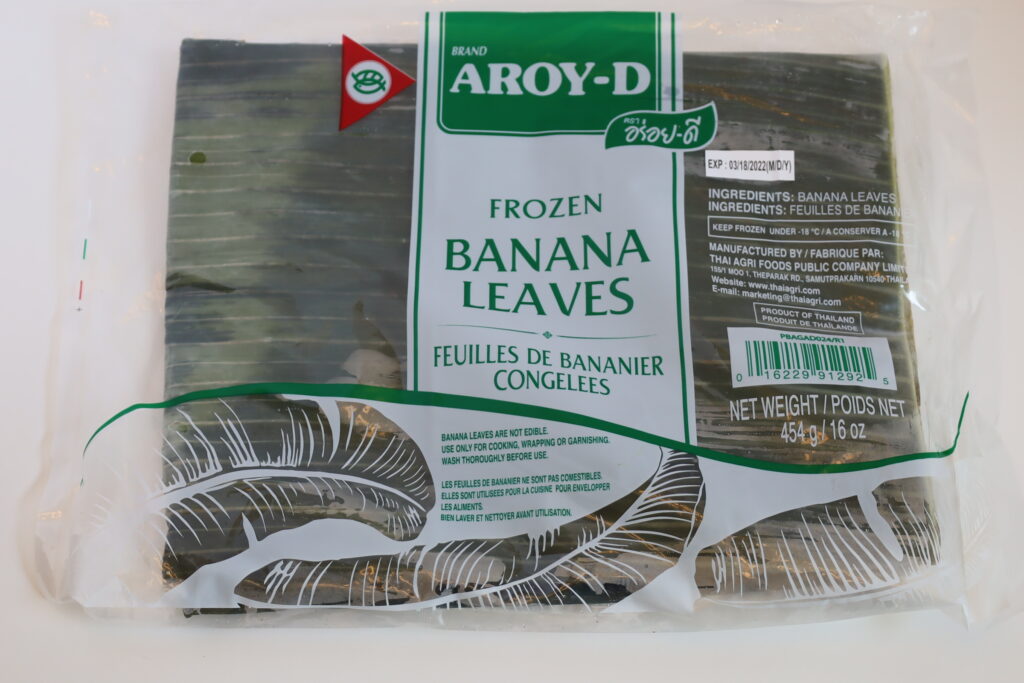
Banana trees have more than just bananas
The Banana plant is a flowering herbaceous plant. It has a central stalk and blades (leaves) on all sides. These leaves can grow to a very large size up to 6 ½ feet (2 meters) in length. Banana leaves are used throughout Asia to wrap food. They do lend a subtle flavor to the food and a bit of color as well. They are inexpensive, can usually be found in oriental food stores, or online. They store well in the freezer. However, they can become moldy, break or split easily and can be hard to find in some areas. It is unlikely that the reader will find full and fresh banana leaves available. Those in the stores usually have been trimmed, may have been frozen multiple times, and are not “fresh”. However, if you find a good Asian or Latin grocery that provides better quality leaves, so much the better.
In using the banana leaf there are a few steps to take before using them with food. Firstly, you need to wash the leaves well. Go through the package of leaves, carefully lay them out on a clean counter and remove stringy or damaged parts. Next use a clean dish sponge, wash all the leaves both sides. Be careful not to move the sponge or paper towel against the grain of the leaf, this can tear the leaves. Once the leaves are clean and dirt removed, use paper towels to dry the leaves again carefully. The good leaves not being used can be placed flat in plastic bags and stored in the freezer or frozen and then vacuum packed. The fibrous edge that was attached to the central stalk, if present, should be removed, however I wait until after boiling the leaves to remove this. Some suggest using these to tie the leaf packets, however I find kitchen twine to work much better. Cut the leaves into the desired size. It is a good idea to buy and prepare extra leaves since some will be damaged and unusable, and they easily tear during the wrapping process, further, as said, they store well in the freezer. Banana leaves will stay very usable in the freezer for up to a year. If you freeze them, and then vacuum pack them they will keep even longer.
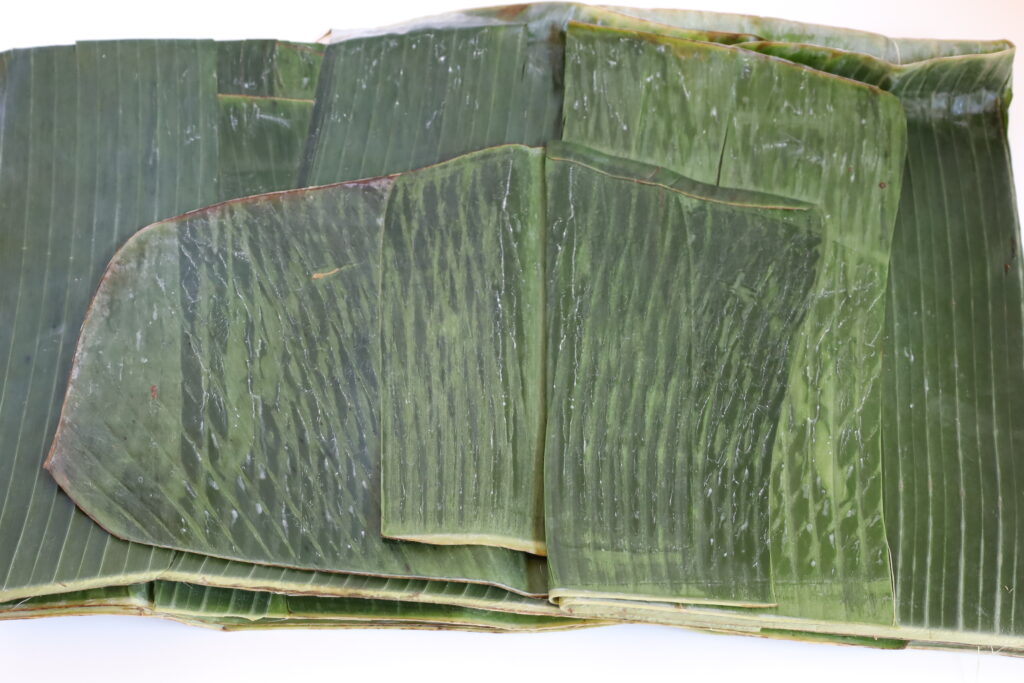
Preparing the Leaf
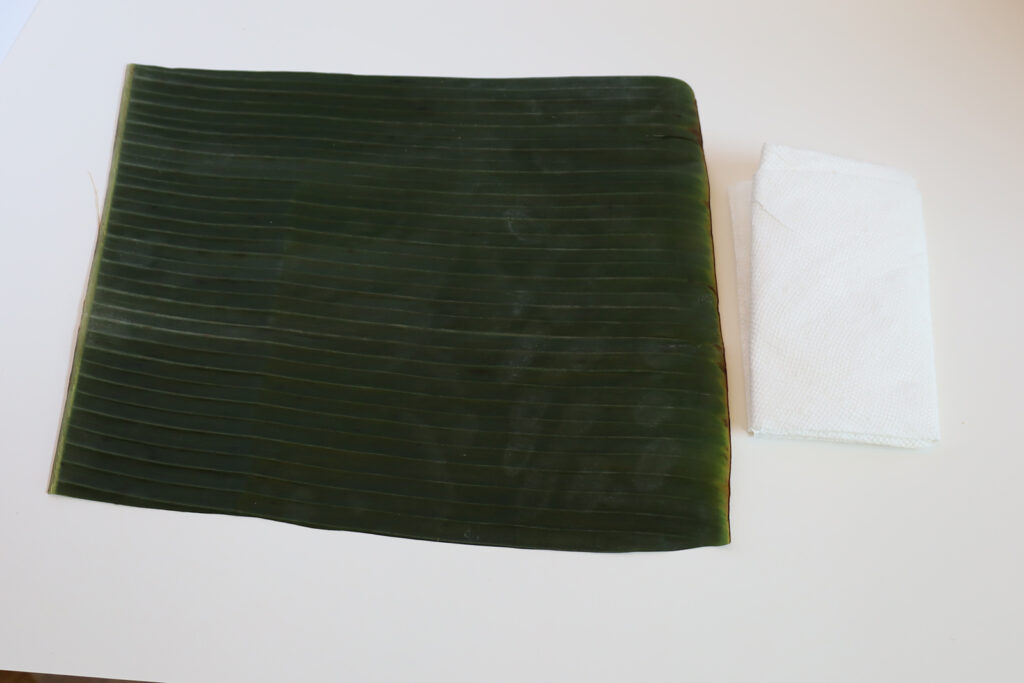
The leaves need to be further prepared since they are not very pliable. To make them more so, numerous techniques have been suggested.
They can be placed in a 200 F degree oven for 5-10 minutes. Alternatively, they can be placed over a gas (or electric) burner passing them back and forth, similar to the charring of a chile in removing its skin, but they should not be burned. Any charring can be whipped off with clean paper towels. You can use the microwave, a simple approach. Set the time for 30 seconds and test the leaves for pliability. Once pliable, they are ready to be used.
I find that using a pot of boiling water works best to make these leaves pliable. Keep the water at least simmering and drop the leaves into the pot a few at a time. Although some suggest that the leaves can become oversoaked, I have not found this to be a problem. The leaves will change to a bright green color, at which point they should be pliable enough to wrap. Again, place only a few leaves at a time in the hot water bath. Be patient and remove the leaf with tongs.
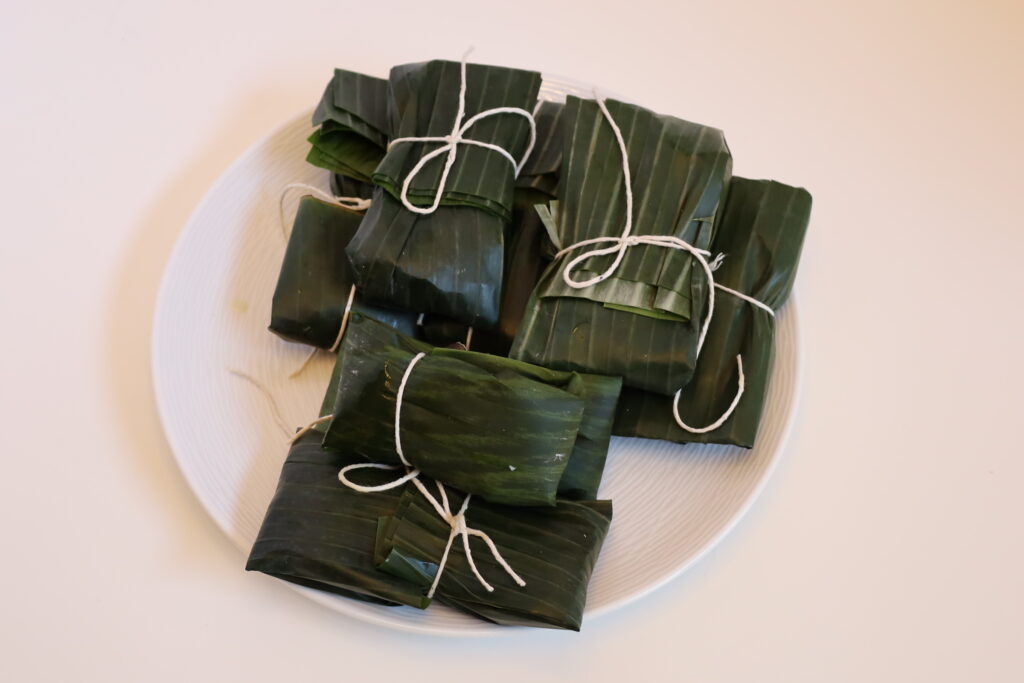
The square shape is fairly straight forward. Cut the Banana leaf to the right size, usually 4-8 inches square, depending on how large you want the packets. Lave the leaf on a flat counter, place the filling just below middle. Wrap one end up and over the packet, them the second end over the first. Then just take the two sides of the packet and fold them in over the first folds. Tie them with twine and steam or boil. Note the squares above and how they are tied.
A second shape is like a party favor, see the pictures above. Firstly place the filling, in this case glutinous rice and banana, in the middle of the leaf rectangle. Roll up the contents into a roll and tie one end. Take the packet and tap the tied end lightly on the board to pack down the filling. Then tie the second end with twine. Note that the fibrous end is not cut off. After the two ends are tied, cut off the excess with a scissors. Then steam, fry, or boil.
All of the above preparation sounds daunting but using banana leaves is another way to wrap food that yields wonderful results. Asian and Latin American cuisines use banana leaves and they are used in Mediterranean cuisine. These leaves can be used to wrap all kinds of ingredients and then they can be boiled, steamed, baked in the over or even BBQed. It does take practice to make even measured wrappers, so your first efforts may be very uneven, as were mine. But after a few practice dishes you too can make nicely formed packets.

